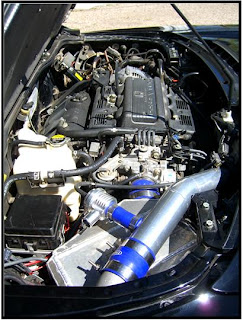Spoon Sports' NA1 NSX Engine
At the encouragement of its U.S. sales and marketing arm, Opak Racing, Spoon purchased a pair-no more, no less-of used LHD chassis from Japanese private parties for experimentation. North American-spec, LHD chassis are not an uncommon sight in Japan due to the country's lax importation regulations in comparison to the U.S. In other words: The two chassis are not of North American origin, and Spoon will not be converting RHD NSX chassis to LHD specifications. It won't need to.
1992 Acura NSX Engine
the NSX's engine, you ask? Well, should you, really? We guess you're a bigger masochist than we thought. This ScienceofSpeed Acura still holds onto the factory 3.0L V-6 powerplant with a sleeved and bored block, increasing the engine to 3.3L, with custom forged pistons. The intake valves, driven by custom stage 2 camshafts, were also enlarged. And if you look closely at the engine picture, you'll see an individual throttle body system. Now that's as uncommon as us finally getting an NSX and kissing a girl. "By our calculations, the engine and induction package should be good for about 320-340 wheel horsepower, which is about 100 hp above factory output2002 Acura NSX Engine
To find more useable low-rev grunt for the street would require the addition of forced induction, which often comes at the cost of reliability and civility. Piercey went with the smog-legal and reliable non-intercooled Comptech supercharger kit, driven to 6psi of boost. The Version Two unit uses a positive displacement Autorotor compressor, which (according to Comptech) is 10 percent more adiabatically efficient, easier to package and offers better maintenance access compared to the original Whipple 1600A compressor, which was phased out for sourcing reasons. This gave some much-needed low-end push for the street, where high engine speeds aren't easily maintained.2004 ACURA NSX Engine
The system is available in Stage I trim (60mm turbo, rated to 600 rwhp), Stage II (67mm turbo, rated to 700 rwhp) and Stage III (76mm turbo, rated to 850 rwhp). All turbos may be ordered with ball bearing option. The Stage I and II systems can be installed on stock engines, but boost levels should be limited to about 10-11 psi or 500-550 rwhp maximum; the Stage II and Stage III systems will require internal engine modifications to utilize the full power potential of this turbo. Other options available are a wide-band tuning module (for street tuning), in-car boost controller, gauge packages, injector and fuel system upgrades.




No comments:
Post a Comment